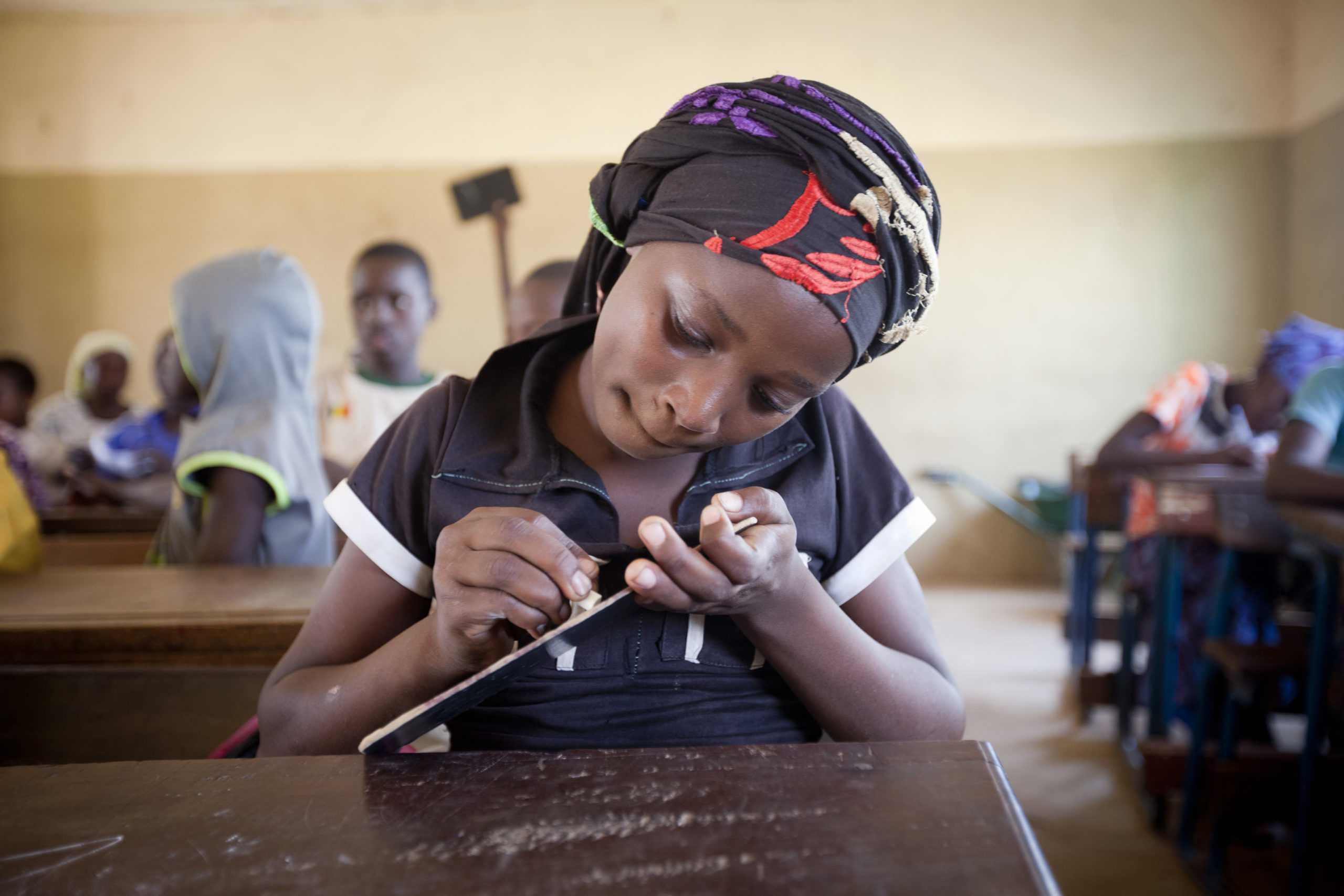We believe that to achieve our goal, we need to address the root causes of child labour as well as remove key barriers to the elimination of child labour.
Pathways of change
Our way of working is based on change on four levels – what we call our pathways of change:
- Children are empowered and have improved access to (quality) education and youth employment within a supportive family and community environment.
- Governments have enforced relevant child-rights based laws and have implemented policies on child labour, education, youth economic empowerment and social security.
- The private sector takes full responsibility for preventing and addressing child labour.
- The EU, Dutch government and international organisations act in support of the elimination of child labour and fulfill their obligation by setting and reinforcing due diligence policies and laws.
Strategies
We want to achieve this change through the a range of complementary strategies:
- Strengthen child protection systems.
- Guarantee quality education.
- Support economic empowerment of youth.
- Ensure Children’s Rights and Business strategies.
- Evidence-based lobby and advocacy.
Approaches
The basis for our strategies are two cross-cutting approaches:
Area-based approach
The area-based approach tackles child labour at the root and leads to sustainable change in the communities. It is applied to get children in specific geographic areas out of child labour and (back) into school or decent youth employment. We work from bottom-up with all relevant stakeholders to remove key barriers to the elimination of child labour and to the protection and fulfillment of child rights.
Supply chain approach
We implement a supply chain approach, promoting the Children’s Rights and Business Principles to bring about change in sectors with a high incidence of child labour in the intervention areas. To realise the potential of global supply chains for improving the health, welfare and development of children, business approaches are needed that address the rights and specific vulnerabilities of children and youth.
Principles
Our choice of strategies and approaches are based on three main principles: rights-based, gender and child participation.
Rights-based
We want every child to have a childhood. All children have the right to learn, play and grow, and must be protected against any form of work that deprives them from enjoying their rights. We base our work and convictions on the UN Convention of the Rights of the Child, the ILO Convention 138 on the Minimum Age for Employment and the ILO Convention 182 on the Worst Forms of Child Labour.
Simply removing children from their workplace is not a sustainable solution to eliminate child labour, because it is often entangled with a lack of social and economic rights of children and their parents. Any meaningful action to combat and prevent child labour must be part of broader efforts to rehabilitate children and guarantee their rights, primarily the right to education and protection. It must also prepare these children to enter decent employment by the time they have reached the legal working age.
We embrace the Children’s Rights and Business Principles to advocate and work directly with companies, supply chain actors, government and civil society to place children’s rights at the heart of the agenda.
Gender
Achieving gender equality is vital to our programme and our contribution to the international community’s commitment to eliminate all forms of child labour by 2025. Gender equality is a fundamental and inviolable human right. Women’s and girls’ empowerment is essential to expand economic growth, promote social development and enhance business performance.
We ensure that girls and boys, women and men, participate and hold equitable and meaningful influence in all activities including decision-making. We make sure they feel safe and empowered to share their views and inputs. We will engage men and boys as key stakeholders in promoting gender equality and addressing gender-specific discrimination and disadvantages.
Child participation
Children are key actors in combating child labour and should participate in a meaningful way in this effort, as long as their participation does not in any way interfere with their right to formal full time education. We define child participation as an ‘informed and willing involvement of all children’.
Participation is about having the right to be heard and the opportunity to express a view, influencing decision-making and achieving change. We aim to empower children and young people as agents of change. We believe that children’s voices, perspectives and expertise are powerful driving forces and we will therefore ensure that child participation is an important element in the interventions. We adhere to a child safeguarding protocol.

